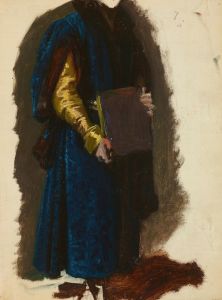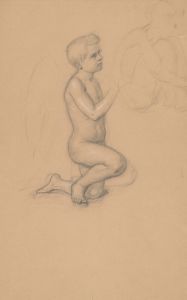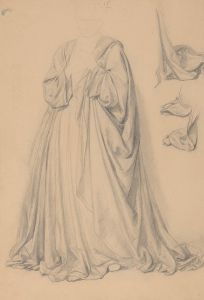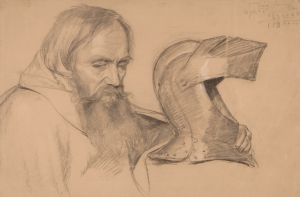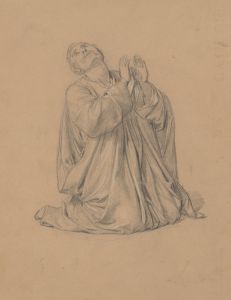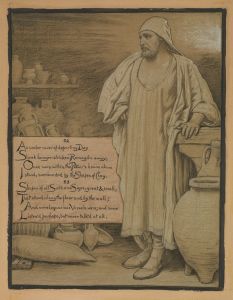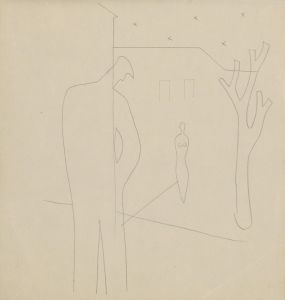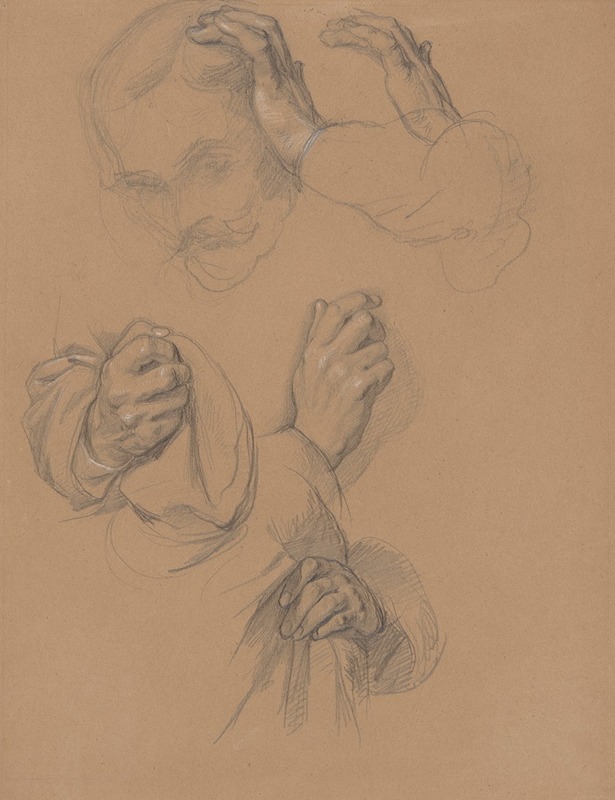
Sketch of head and studies of hands of Gniewosz of Dalewice; studies of Jagiełło’s hands for the painting ‘Queen Jadwiga’s Oath’
A hand-painted replica of Józef Simmler’s masterpiece Sketch of head and studies of hands of Gniewosz of Dalewice; studies of Jagiełło’s hands for the painting ‘Queen Jadwiga’s Oath’, meticulously crafted by professional artists to capture the true essence of the original. Each piece is created with museum-quality canvas and rare mineral pigments, carefully painted by experienced artists with delicate brushstrokes and rich, layered colors to perfectly recreate the texture of the original artwork. Unlike machine-printed reproductions, this hand-painted version brings the painting to life, infused with the artist’s emotions and skill in every stroke. Whether for personal collection or home decoration, it instantly elevates the artistic atmosphere of any space.
Józef Simmler, a prominent Polish painter of the 19th century, is known for his historical and portrait works, often characterized by their meticulous detail and emotional depth. One of his preparatory sketches, titled Sketch of head and studies of hands of Gniewosz of Dalewice; studies of Jagiełło’s hands for the painting ‘Queen Jadwiga’s Oath’, provides insight into his artistic process and dedication to realism.
This sketch was created as part of Simmler’s preparatory work for his larger historical painting Queen Jadwiga’s Oath. The painting itself depicts a significant moment in Polish history, focusing on Queen Jadwiga of Poland, a revered monarch and saint. The scene captures her solemn oath, symbolizing her commitment to her people and her role in the unification of Poland and Lithuania. While the final painting is well-known, the preparatory sketches, such as this one, reveal Simmler’s attention to anatomical accuracy and his effort to capture the individuality of his subjects.
The sketch includes studies of the head and hands of Gniewosz of Dalewice, a historical figure associated with the court of Queen Jadwiga. Gniewosz played a role in the political and social events of the time, and his depiction in the painting required careful study to ensure historical and visual accuracy. Additionally, the sketch includes studies of the hands of King Władysław II Jagiełło, Jadwiga’s husband and co-ruler, who was instrumental in the Polish-Lithuanian union. By focusing on the hands, Simmler emphasized their expressive potential, as hands often convey emotion and intent in historical compositions.
Simmler’s sketches demonstrate his reliance on live models and his commitment to studying human anatomy. The detailed rendering of the hands and head in this preparatory work highlights his methodical approach to capturing the physical and emotional essence of his subjects. These studies were likely used to refine the poses and gestures in the final composition, ensuring that each figure contributed to the narrative and emotional impact of the painting.
Although the final painting Queen Jadwiga’s Oath is celebrated for its historical significance and artistic quality, the preparatory sketches, such as this one, are equally valuable for understanding Simmler’s creative process. They offer a glimpse into the meticulous planning and artistic skill required to produce a work of historical art that resonates with viewers.
This sketch is an example of how artists like Simmler approached large-scale historical paintings, balancing historical accuracy with artistic expression. It remains a testament to his dedication to his craft and his role in preserving Polish history through art.





